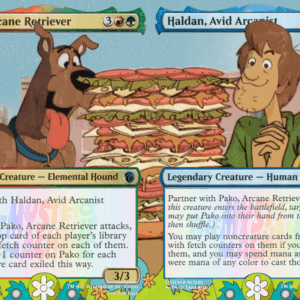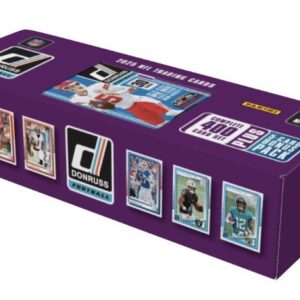In the colorful and kaleidoscopic world of basketball trading cards, few pieces shine as brightly or resonate with such nostalgic fervor as the 1995-96 Flair Hot Numbers insert featuring none other than Michael Jordan. Card number 4 in the series, it is a piece that exudes energy even in stillness, demanding attention much like the athlete himself at the peak of his powers.
To understand why this card, in particular, continues to captivate collectors and enthusiasts nearly three decades later, you must first appreciate its unique composition. The card employs a remarkable layered lenticular printing technique—a nod to a time when such innovations seemed to leap from the pages of a graphic design handbook. This method of printing allows the card to throw light around like a Vegas-style scoreboard, creating an illusion of movement in the numbers whenever you tilt it. Such an effect is not just mesmerizing but also very of its time—the mid-to-late 90s, where design boldness mirrored cultural trends of loud colors and audacious styles.
Caught amidst the Chicago Bulls’ legendary run, when championships seemed almost a preordained conclusion, the Flair line was Trail Blazing. It aimed to prove that premium paper could compete with, and even outshine, the encroaching dominance of chromium-based cards. The result was a 15-card insert set bathed in a distinct, three-dimensional lenticular glaze. Its scarcity was almost mythical—appearing once in every 36 packs, meaning entire boxes could be opened without ever glimpsing one. Imagine the thrill—or the agony—of such a hunt!
Today, that scarcity continues to underpin its value in the market, commanding prices that regularly breach and circle the $4,000 mark for a pristine PSA 10 graded copy. This may rise even higher in the right auction settings, where eager bidders drive prices upwards, reliving the joyous rush of securing a piece of history. But what exactly makes this particular card stand out amidst the pantheon of 90s basketball inserts?
The explanation rests, somewhat ironically, on its unabashed lack of subtlety. It is a card of its era, one that embodies the resplendent, carefree spirit of the 1990s. Undeniably, its appeal is in part due to its apparent complexity and mystery; the card’s design, in combination with the technical ugliness hidden by its glossy surface, speaks to collectors and hobbyists of all stripes. Those who remember it as an object of their childhood desires, and those discovering it anew through a vintage lens, find common ground in its vibrant aesthetic.
Flair’s design philosophy at the time—enriching paper with heft and personality—found its champion in the Hot Numbers series. Unlike its chromium rivals, the card did not rely on refractor tricks or die-cut extravagance to charm collectors. It existed as proof that paper, too, could elicit wonder, embodying a graphic design bravado that spoke loudly without uttering a word.
Collectors build entire collections around these glimmering pieces of cardboard, forming narratives and showcases that juxtapose them with similarly iconic inserts from the era. Whether they sit next to “New Heights” and “Scoring Kings” or act as the flamboyant cousins to Jordan’s more reserved base issues, they command attention. Tracking down all 15 cards to complete the Hot Numbers set becomes a gratifying treasure hunt for the committed enthusiast—a tangible link to the mid-90s basketball zeitgeist.
In the ebbs and flows of the trading card market, clarity often comes from observing recent sales data. The narrative is straightforward: about $4,000 is the standard asking price for a PSA 10, with occasional spikes. Auction results narrate a story where bidders engage in a silent dance, the winner often securing a piece for a price reflective more of desire than strict market logic.
And then there are the aesthetics of the card itself—the lenticular surface which conceals faint imperfections in flat photographs and subtle edge damage. Slabs, while useful, cannot replace the sharpness of the human eye in evaluating the true essence of a card. A card that excels in person will often do so numerically as well.
For those who savor the experience of the hunt, the prospect of discovering a Jordan Hot Numbers card in a Galaxy Rip Pack remains a possibility as tantalizing now as it was back then. Such moments, where the card sees the light of day, draw crowds and phones snap to capture video—a testament to its enduring magical allure.
As an artifact, the 1995-96 Flair Hot Numbers Jordan card occupies a position of rarefied air in the hobby. Its appeal is multifaceted: a delight to look at, a secure investment vehicle, and a quintessential piece of basketball Americana. Whether displayed as a centerpiece or nestled among the titans of 90s inserts, it stands resilient, captivating, and undeniably hot—an enduring testament to the era that produced it and the legendary athlete it represents.






